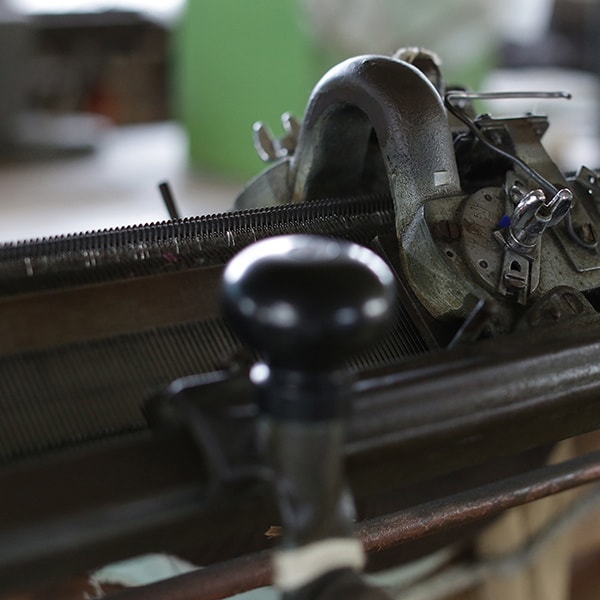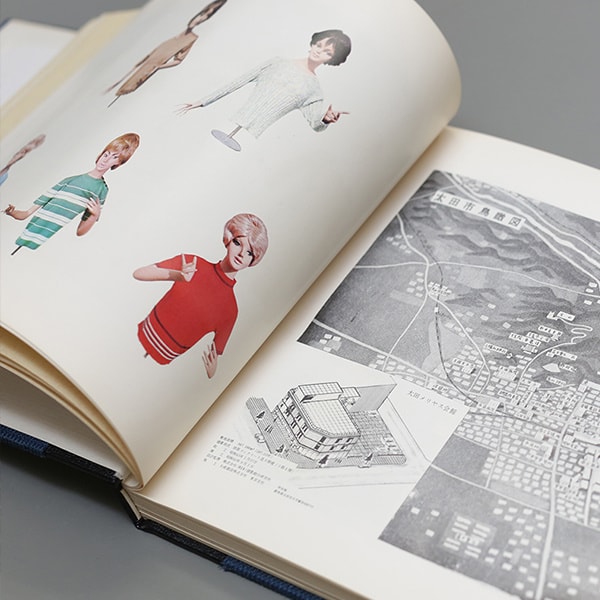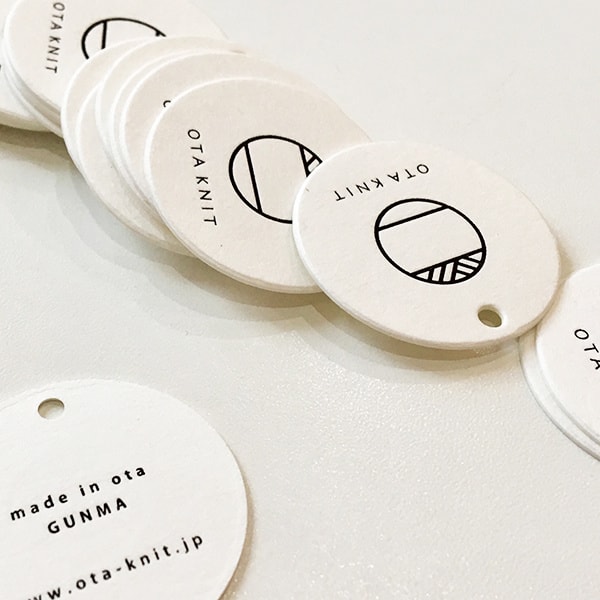about - OTA KNIT について -

自動車メーカー、SUBARUの発祥地である太田市。太田市のニット産業は戦後、SUBARUの前身である中島飛行機の技術者が糸をつむぐ「手紡機」を製造したことが始まりと言われています。かつてはニットの産地として200社近くあったニット工場が海外生産や後継者不足により現在は10社を切っております。「OTA KNIT」は太田市のニット産業をもう一度、盛り上げようと市内の工場やブランドが力を合わせて取組む地域ブランドです。
職人により丁寧に作りこまれ生産する
MADE IN OTA JAPAN のニット製品です。

太田市産のニットの生産地証明(下札)
※OEMでも希望の場合はお付けできます。
history - 歴史 -
太田市はかつてニットの町でした
戦後、太田市の産業の中心であった中島飛行機は解体され、技術者がたくさん市内に集まっていました。その技術者が太田市で手紡機を使ったことと、桐生市などの繊維産業地帯が周囲にあったことが幸いし、太田市でのニットづくりが始まったと言われています。
女性用のセーターやカーディガンを得意とし、東京近郊という地の利を生かしながら時流に乗ることで、太田市におけるニット製造業は瞬く間に広がっていきました。当時工場に勤める人以外にも、内職などで手伝ってくれる人達を入れると相当な数の人々がニットづくりに携わっていて、地域経済をリードする一大産業となっていきました。
Ota City used to be a knitting town.
After the war, the Nakajima airplane, which was the center of industry in Ota City, was dismantled and many engineers gathered in the city. Thanks to the engineers' use of hand-spinning machines in Ota City and the surrounding area of textile industries such as Kiryu City, it is said that knitting started in Ota City.
The knitting industry in Ota City has rapidly expanded, thanks to its expertise in women's sweaters and cardigans and its ability to capitalize on its geographical advantage in the suburbs of Tokyo. In addition to the people who worked at the factory at that time, there were a considerable number of people who were engaged in knitting, including those who helped with side job, and it became a major industry that led the local economy.

業界のシフトとニット産業の衰退
1952年には太田ニット工業組合(旧太田メリヤス工業協働組合)の加盟数は141社に急増、68年には地域のランドマーク・太田メリヤス会館が完成、80年代には最高出荷高を記録します。右肩上がりに成長してきた太田市のニット産業、しかしその背後には大きな変化の波が忍び寄ってきていました。海外生産へのシフトです。バブルがはじけ、90年年代になるとアパレル業界は安い労働力を求めて商品の海外生産へシフトを進めることになります。その結果、かつて90%以上を占めた国内シェアは数%に落ち込み、受注数は激減、太田市のニット産業は衰退の一途をたどることになります。各社品質での差別化を図るものの、質を求めるには技術が必要となり、他業種へ転換する事業者も増え続け、さらには後継者が育たない中、一件また一件とニット業者は姿を消していきました。
Industry shifts and the decline of the knitting industry
In 1952, the number of member companies of the Ota Knit Industrial Association surged to 141, and in the 80's it recorded the highest shipment. The knitting industry in Ota has grown steadily, but a wave of major changes has crept up behind it. That is shift to overseas production. After the bubble burst, in the 90's, the apparel industry shifted to overseas production in search of cheap labor. As a result, the market share of knitwear in Japan, which once occupied more than 90% of the market, fell to a few percent, the number of orders fell sharply, and the knitting industry in Ota City continued to decline. Although each company tried to differentiate itself in terms of quality, the difficulty to seek higher quality because of the need for technology led to an increase in the number of companies converting to other types of business, and the number of knitting companies disappeared one after another as successors failed to develop.

OTA KNIT(おおたニット)の誕生
こうして一時代を築いた太田市の”ニット産業”は姿を変えざるを得ませんでした。現在組合員は10社を切る状況ですが、それでもニットづくりにかける想いは脈々と息づいています。そしてその想いを消さない、後世につなぐその役割として生まれたのが「OTA KNIT(おおたニット)」です。太田のニットを市内外に知らせることはもちろん、より良いものづくりを通して太田のニット製造業を元気にする、その為の具体的なアクションとして誕生しました。
Birth of OTA KNIT
The knitting industry in Ota city, which built an era in this way, had to change its appearance. Currently, there are fewer than 10 member companies, but their passion to create knitwear is still alive and well. The "OTA KNIT (Ota Knit)" was born as a role that will not dispel such passions and keep them alive for future generations. It was created as a concrete action to make Ota's knitwear known to people in and out of the city and to revitalize Ota's knitting industry through better manufacturing.

